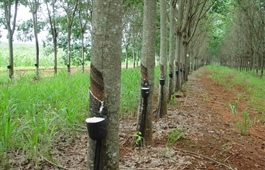Winners, losers when oil prices soar
Winners, losers when oil prices soar
Oil prices have soared, enabling this commodity to be among the most profitable since the start of this year. How will this trend affect the local stock market?
Customers at a gas station in HCMC. Demand for oil in particular and commodities in general has increased again by virtue of economic recovery prospects - PHOTO: UYEN VIEN
|
On March 4, Houthi rebels in Yemen suddenly attacked an oil processing facility by Aramco in Saudi Arabia, pushing WTI oil prices by almost 5% that day and 3% the following day. The trading session at the start of last week continued to show an increasing trend, with WTI oil prices hitting a record high since October 2018, almost reaching US$68 per barrel; Brent oil prices have reached nearly US$71.40 per barrel.
After collapsing in April 2020, oil prices were not expected to recover so rapidly. Geopolitical tension in the Middle East recently has been the tipping point that causes the market to accelerate; oil prices have risen steadily as supply and demand may be in imbalance.
Demand for oil in particular and commodities in general has increased again by virtue of economic recovery prospects, especially as vaccination programs have started in developed countries since the fourth quarter last year. The US$1,900-billion stimulus package approved by the U.S. Senate and presented to President Joe Biden recently will strengthen the recovery prospects of the world’s biggest economy.
In terms of supply, shale oil supply by the U.S. may be tightened under President Joe Biden’s leadership. OPEC’s decision to extend the period during which output will be cut has heightened the risks of demand outstripping supply. In a recent meeting, OPEC and its allies have decided to continue restricting supply until April, with Saudi Arabia, the country with the greatest output in this organization, voluntarily reducing supply by one million barrels per day.
Consequently, analysts have forecast higher oil prices. Goldman Sachs increased its Brent oil price forecast by US$5 (US$75 per barrel in the second quarter and US$80 per barrel in the third quarter in 2021). UBS also increases its Brent oil price forecast to US$75 per barrel and its WTI oil price forecast to US$72 per barrel in the second half of 2021.
In previous years, higher oil prices often exert pressure on the stock market, fueling fears of inflation and higher interest rates. However, due to the pandemic, this effect will not be significant. Instead, it may reflect hope for a stronger economy and bode well for the stock market.
Polarizing effects
Different sectors may respond differently. Oil firms will fare well in the stock market, even in the early stage. For example, the price of PVD under PV Drilling rose by 15% from that in late February. The price of PVS under the Petrovietnam Technical Services Corporation increased by over 15%. The price of PVB under PV Coating jumped by over 17%.
Fuel and energy shares have benefited from surging oil prices, too. GAS shares have been almost 10% more expensive while CNG shares have climbed by 15%.
On UpCom, OIL shares are considered as the fastest to benefit while BSR shares by Binh Son Co. once became 40% dearer, when the fluctuation band on UpCom was 15%, more than twice that of HOSE. Many oil shares have seen prices soaring through the roof across different trading centers.
However, some shares have been adversely affected. First, fertilizer shares such as DPM and DCM may suffer as fuel accounts for 50-60% of production costs. While value-added tax law amendments may help fertilizer shares, further hikes in oil prices will impose a staggering burden.
Second, gas-fired thermal energy shares, such as NT2 and BTP, have been adversely affected. These firms rely on GAS, so more expensive gas prices may reduce their profit margins and make them less competitive than other forms of energy generation. POW shares, while also affected, continue rising in prices by virtue of the PVM deal approved on March 4, 2021.
Third, aviation and transport shares will be in trouble as fuel accounts for a significant share of their cost profile. However, after Covid-19 disrupted the supply chain and affected travel demand in 2020, recovery prospects this year mean that enterprises may not be so severely hampered by rising oil prices.
Finally, chemical shares will struggle since some inputs such as sulfur and asphalt are products of the oil refining process. Higher oil prices will translate into costlier inputs. Transport costs may be higher, too, as most of them are imported.
Sanitizer firms benefited tremendously from escalating demand last year. As infection risks decrease, their shares may be under downward pressure. Examples include LIX and NET shares, especially since surface disinfectants account for 60-80% of the input costs of these firms.






































